Ser Serpas walks
Ser Serpas skims the surfaces of the streets and lots, “attempting to rip something from the refuse piles”
Ser Serpas (b. 1995, Los Angeles) walks a lot. “Let’s meet there in hour and forty-five or so, that’s how long it will take me to walk from Brooklyn.” While she walks, things swoop in, fixate into viewfinder, blur out of picture, accumulate, and distract. On a slow burner of permanent construction-cum-helicopter background noise, the choreography of chance encounters between the streets and the people that litter it (once romanticized as urban flaneurship) amounts to a hysterical concoction of tenses and moods. Now, condemned to a continuous socialized spatial existence either via mushrooming notification cloud, Google map routing, or too many people running away from something keeps dragging one out of the psychogeographic derive into the straight-up ADHD mess.
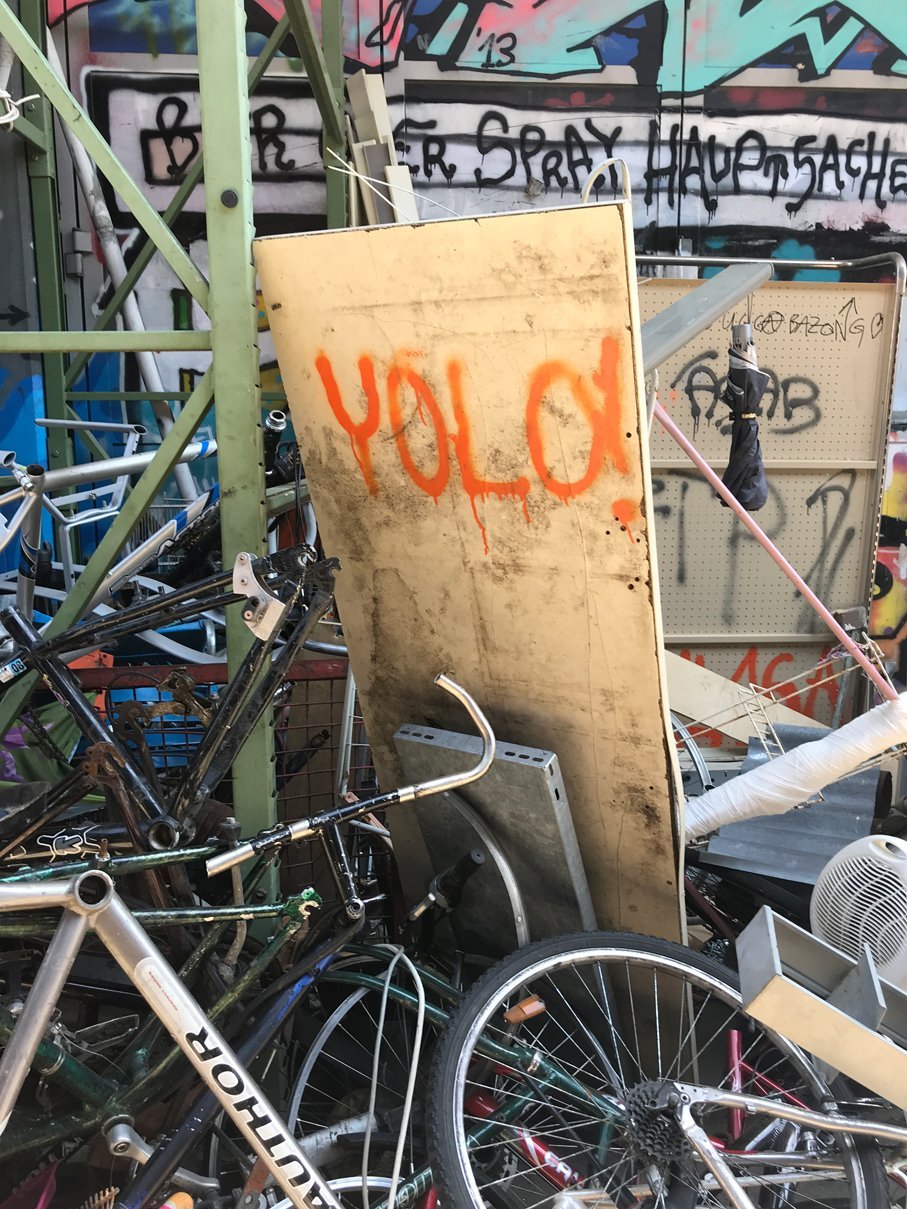
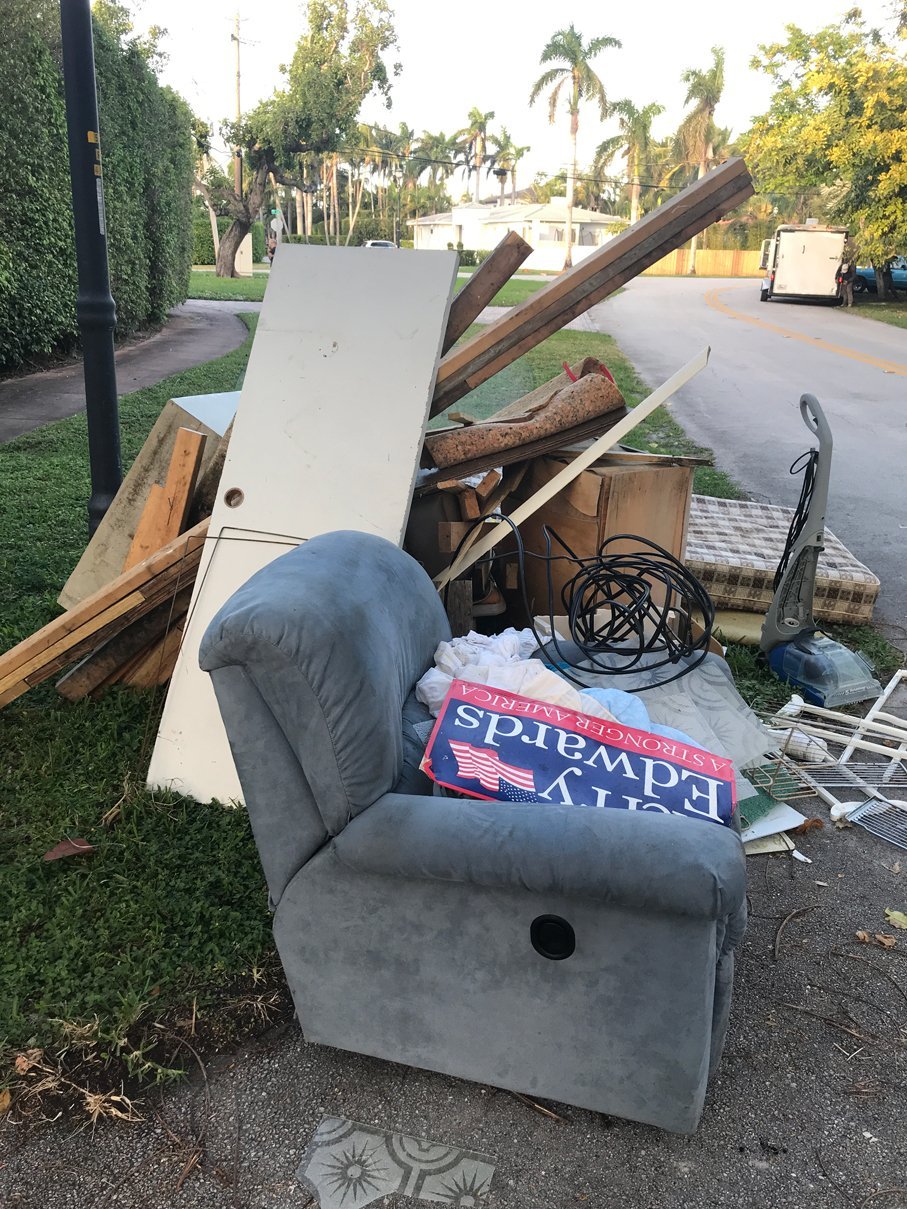
In the halcyon days of the Situationist walks, meandering around the city used to be praised as the time spent outside of the realms of profit, where one is neither working nor buying. Now, you already know that one is always already working and buying, particularly when it doesn’t look like it. This is the palette. Serpas writes poems on the trains, into her phone, lines spilling out, bare minimum of punctuation. She skims the surfaces of the streets and lots, “attempting to rip something from the refuse piles,” sieving the landscape of the “satellite dishes sprinkled about mirrors.“ She says, “When I find the items I’m with people, and it’s a bit of a performance to pick things out with the staff of the place you’re picking them for and with intention. I work in this way because I can be pretty chill about it, but once the fun is ripped out, I’m done.“
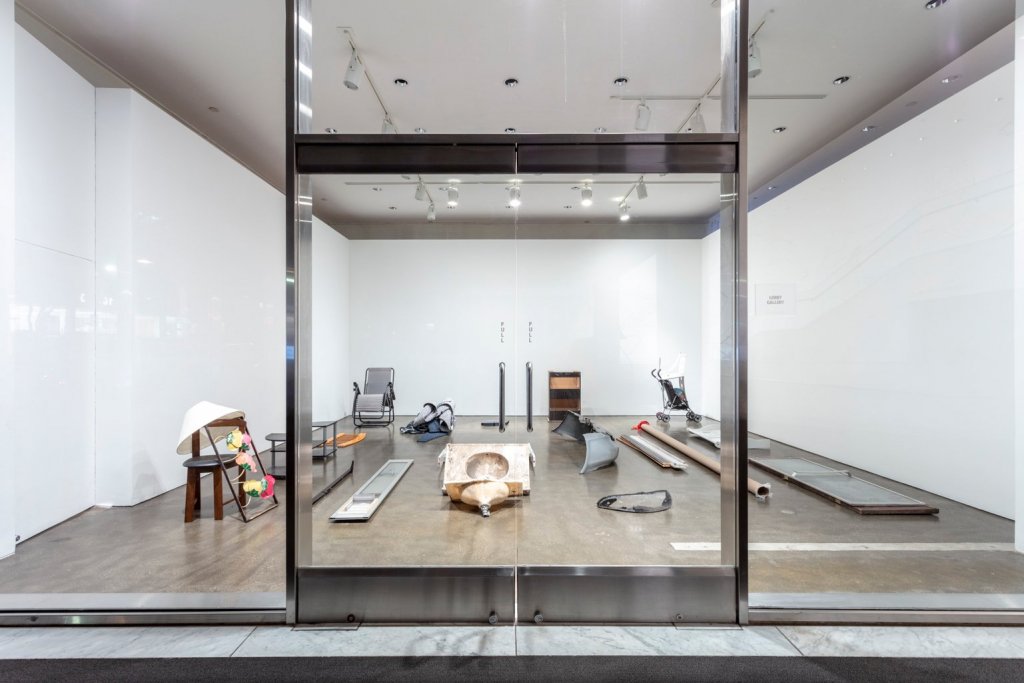
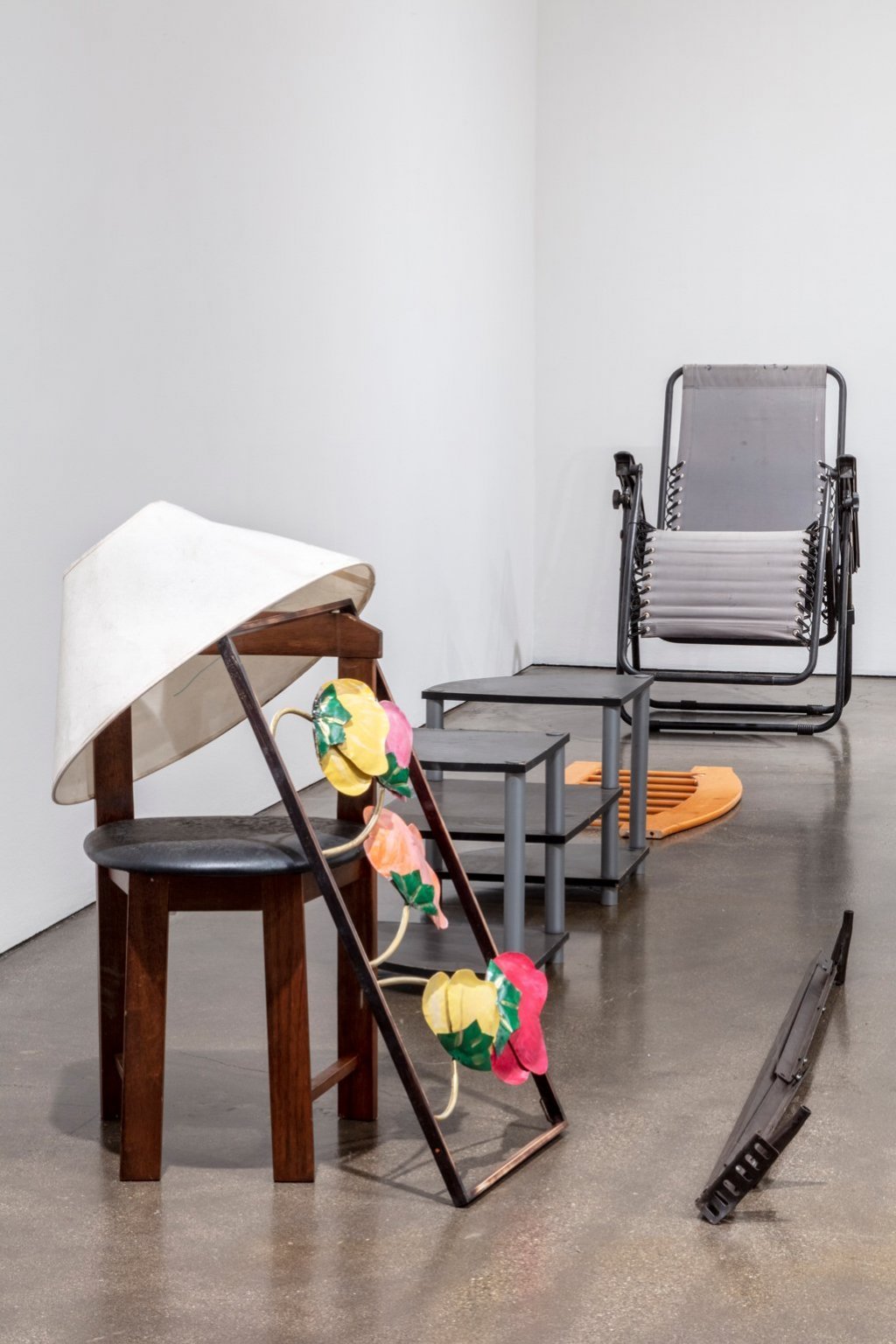
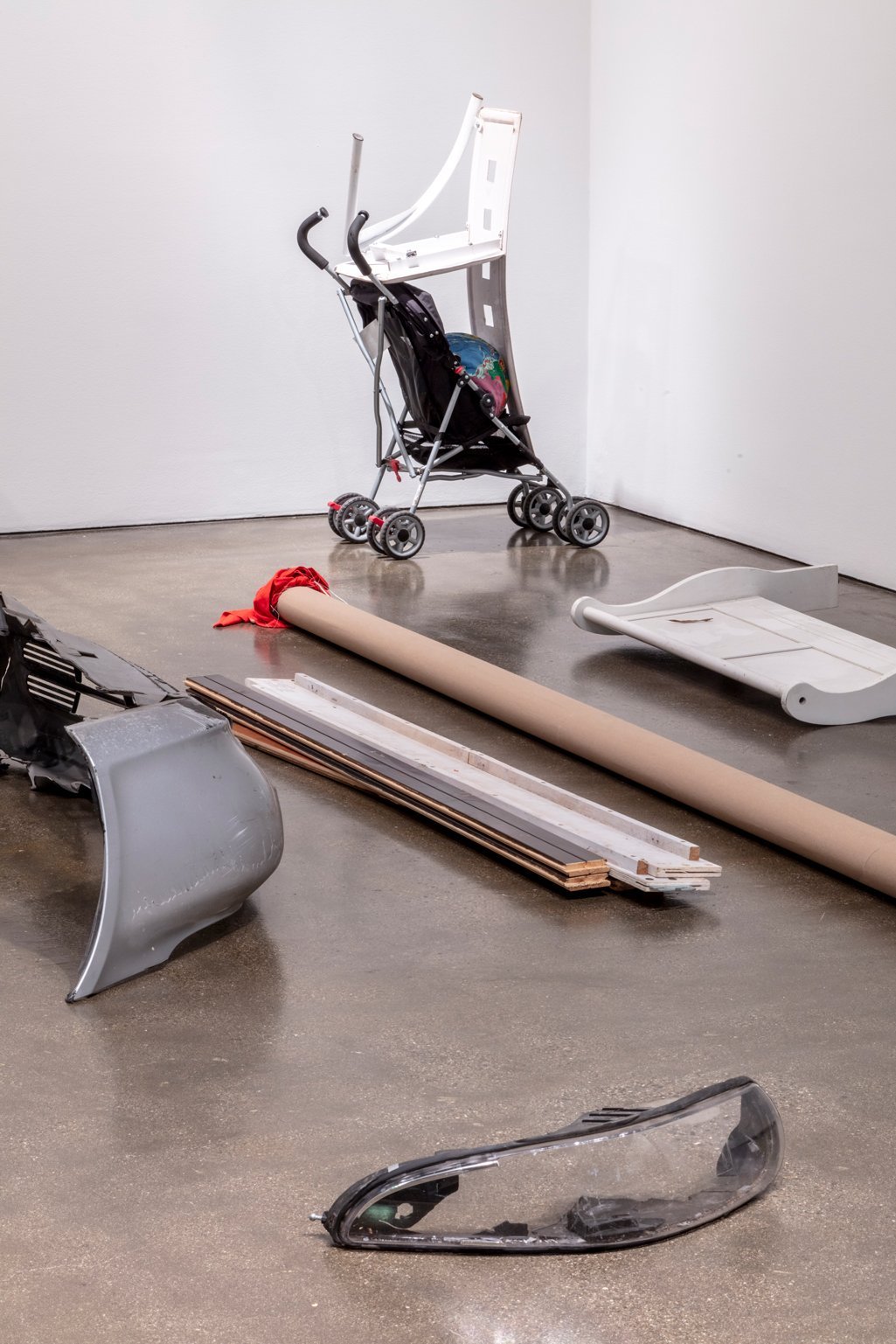
And it’s true. Her most recent piece, which is described by the artist “not as a work or works” but a set of potentials that deferred their finite form to a, perhaps, some other point in time, was titled Potential Indefinite Performance, This That And Now Again (2020). Unable to work on-site due to various pandemic-related reasons, refuse for the piece was gathered remotely by her accomplice in San Marino, the neighborhood where the “exclusivity was always a plan,” [1] and where part of “Made in LA 2020: a version” is located. This is The Huntington Library, bearing the name of its founder, the railroad magnate Henry Huntington, who in 1913 together with lawyer George S. Patton bred the wealthy enclave, and made sure that property values would be protected by stringent zoning regulations ever since. Embraced by the genteel gardens, outdoor on the library’s plantbed, part of Serpas’ potentials lay. From skimming through array of comments below the picture of the pieces, we are informed that the sight, familiar but out of place, appears contentious, even truculent, to its local audience. While the refuse is displayed in a precise grid, the plantbed makes it seem as if the empty drawers, upside-down ironing board, duo of printer copier scanner all-in-one, and a bunch of other castaway items have been harvested and put aside by waste pickers, or that it is a part of houseless encampment. Teetering on the brink of falling into non-art, it appears unlike its sibling arrangement on the west side of LA—here, at the Hammer Museum, the arrangement of stuff sits calmly neutered behind the massive glass doors of a closed off lobby gallery. “A museum is like the lungs of a great city; the crowd floods into the museum every Sunday like blood and it leaves purified and fresh.” [2] Bataille’s words on the museums having a strange way of following in the footsteps of slaughterhouses, like their shadow, rising up where they once were (or, remodeling and extending), on pushing their negative pole to the edges of the city; the same that we reject and discard we adore seeing on the pedestal, as on Sundays, things feel different.
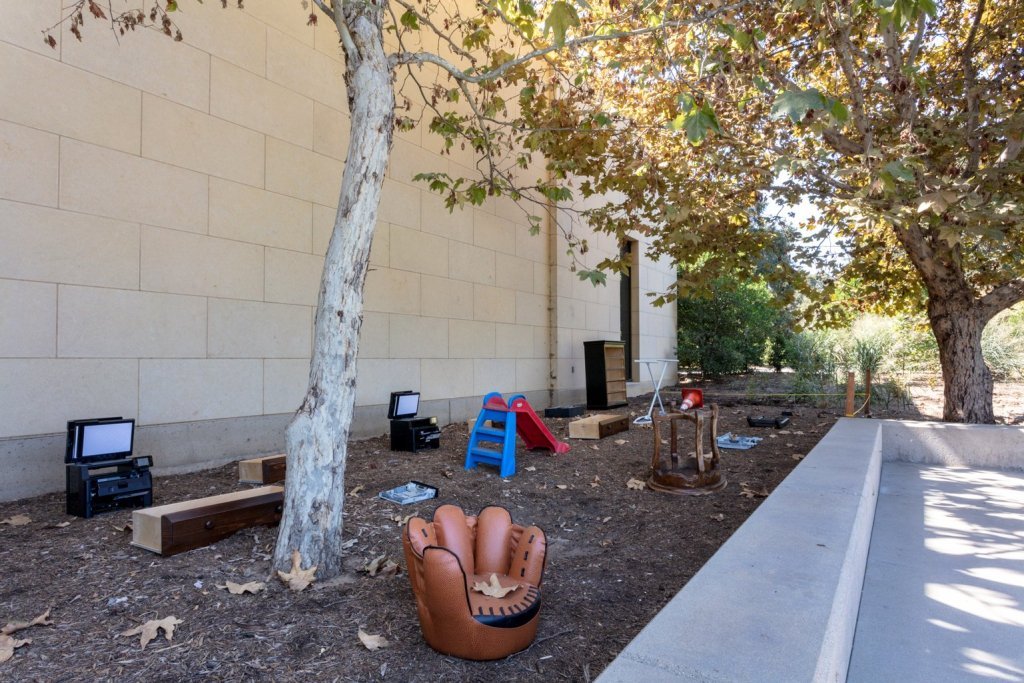
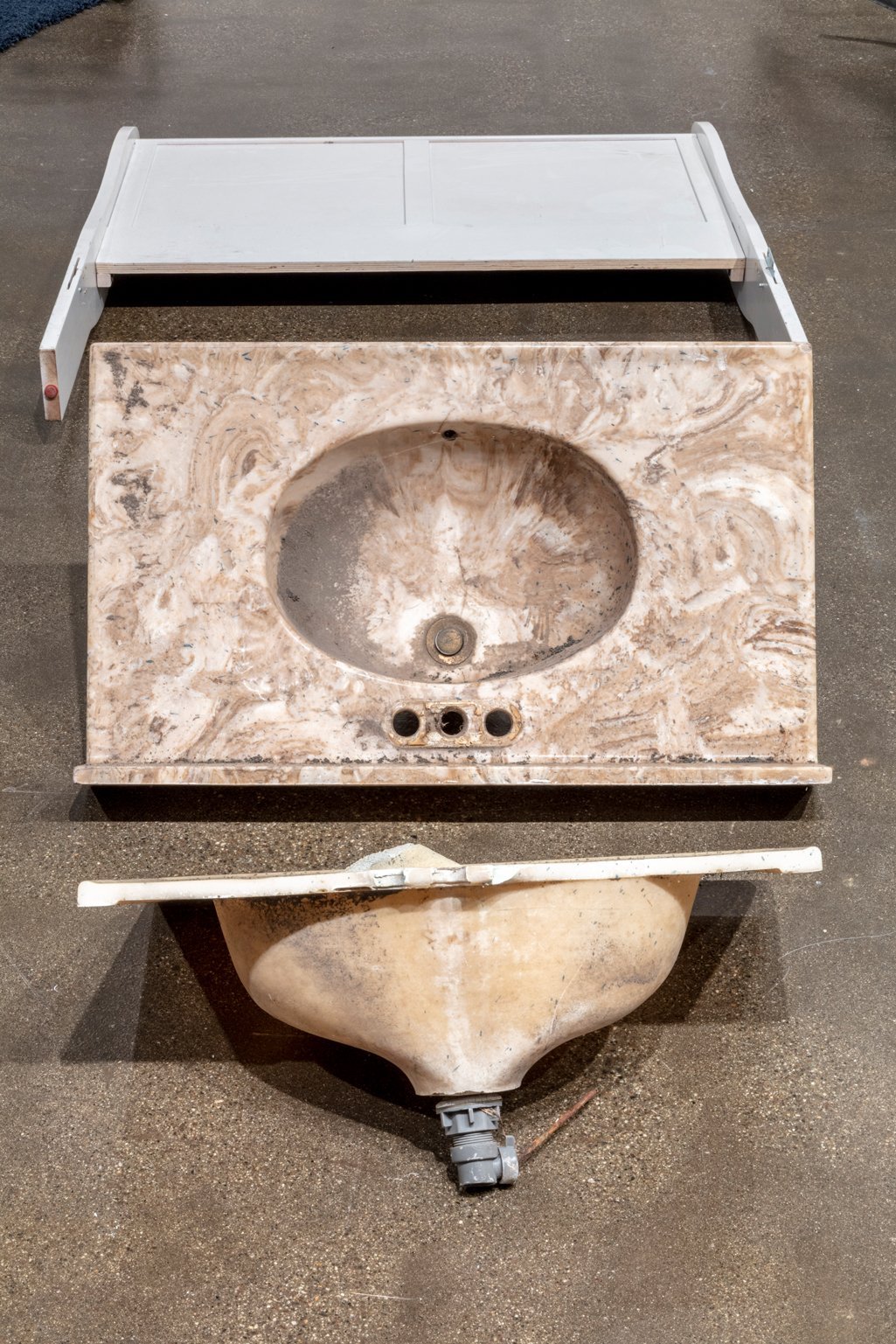
The statement from the artist accompanies both contributions for the LA Biennial, elaborating that incumbent reliance on “institutional guidelines instead of the artist’s discretion,” as well as a number of contributing factors amounted to the fact that the work or works cannot be made. However, in-between the lines (as well as in-between the locations) is where the work happens. Acknowledging that the imposed set of circumstances amounts to conjoint levels of inaccessibility and that this must be accounted for, results in the removal of agency from the work itself. It is a lesson in livelihood, in irritability (which doubles as a symptom of recognition), and in proximity between us and what we chose not to look at.
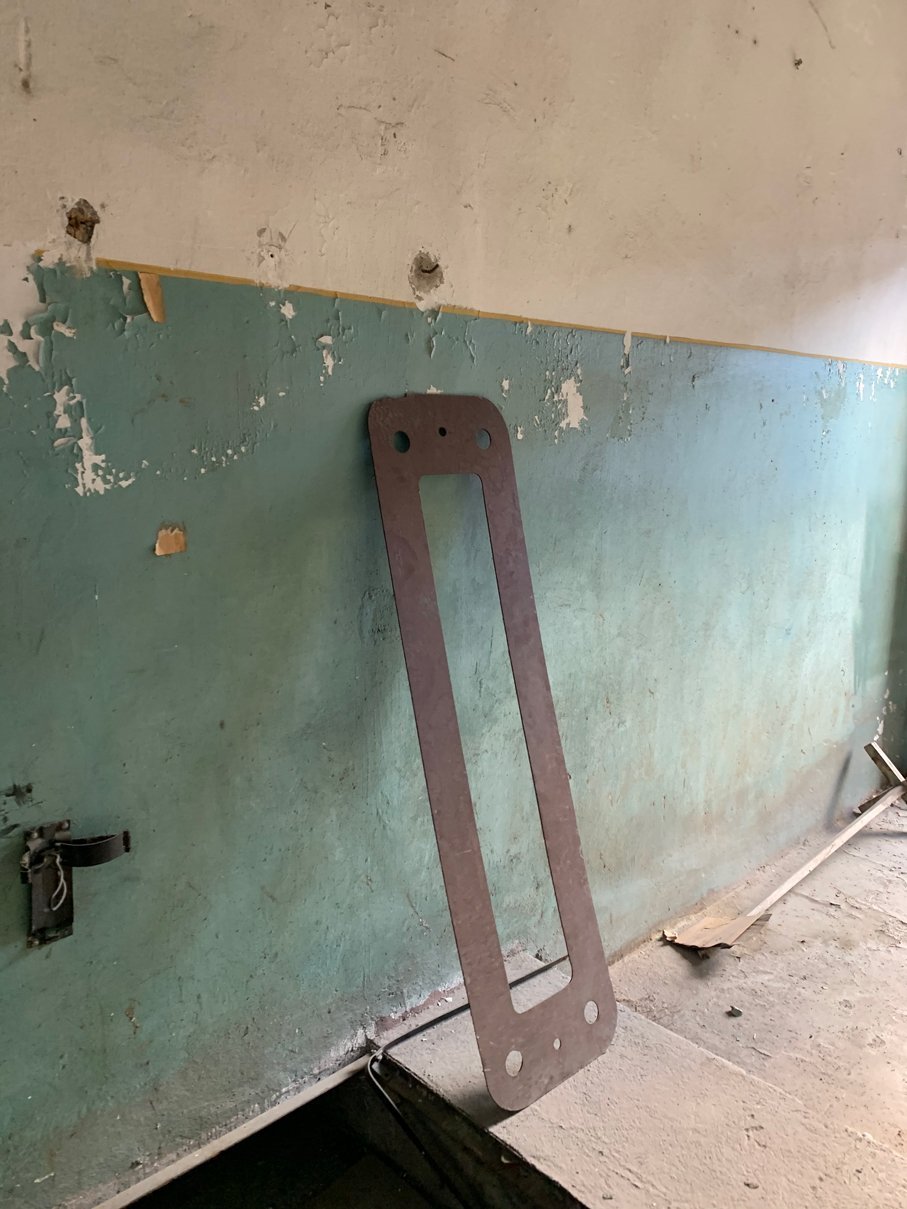
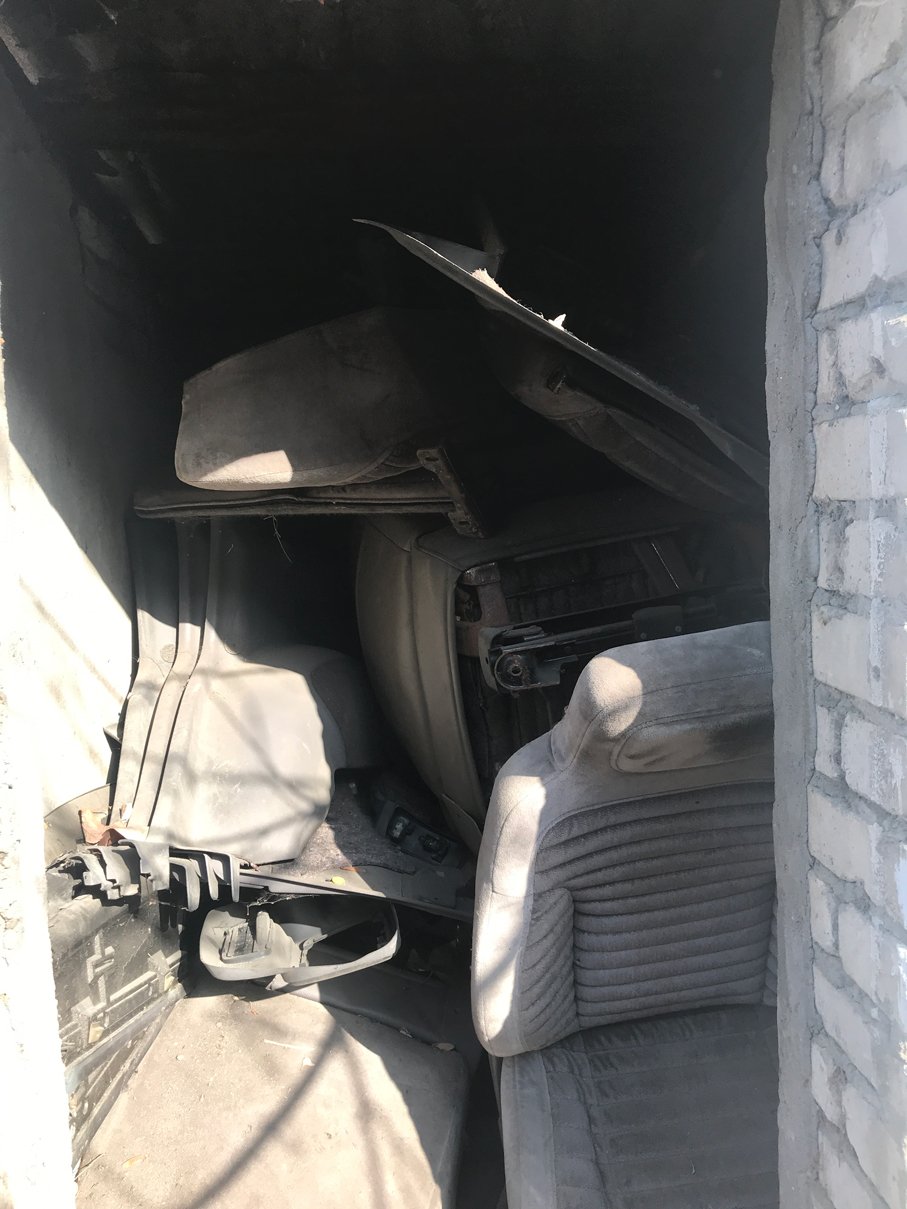
Potential Indefinite Performance… is related by Connie Butler [3] to the iconic pieces of 60s minimalism; Barry Le Va’s “dispersal” installations, and Robert Morris’ scatter pieces. While sharing some formal language—or better, acknowledging Serpas’ sly nod to the minimalist tactics, the genealogy of her operations strays out of the expected canon. Unlike Morris and Le Va, whose chosen industrial residues have been processed, cut, penetrated and discarded by machines—speaking of the excesses of capitalist mode of production, but never entertaining their lifecycle of use—Serpas’ chosen objects have been bought, handled, used, abused and discarded by the tenants of the areas she scavenges from. It is something that has been “through things,” and in this through-ness—voracious oscillations of desire from ownership and attachment to divestment and abandonment—is where her interest in dichotomous nature of care and non-care lays. In her text Becoming Trash, Hannah Black says, “In conditions of relentless horror and our defenses against it, carelessness is a way to show care.” [4] Attachment to things, living and not living, has its limits when human life is treated as disposable by almost every action of the governing system existing today. When the exhibition is finished, either someone else takes care of the pieces, houses them in their home—or they slowly percolate back into the streets. Black: “The negation is all the more stunning in its nihilism because it is ambivalent and hungry.“
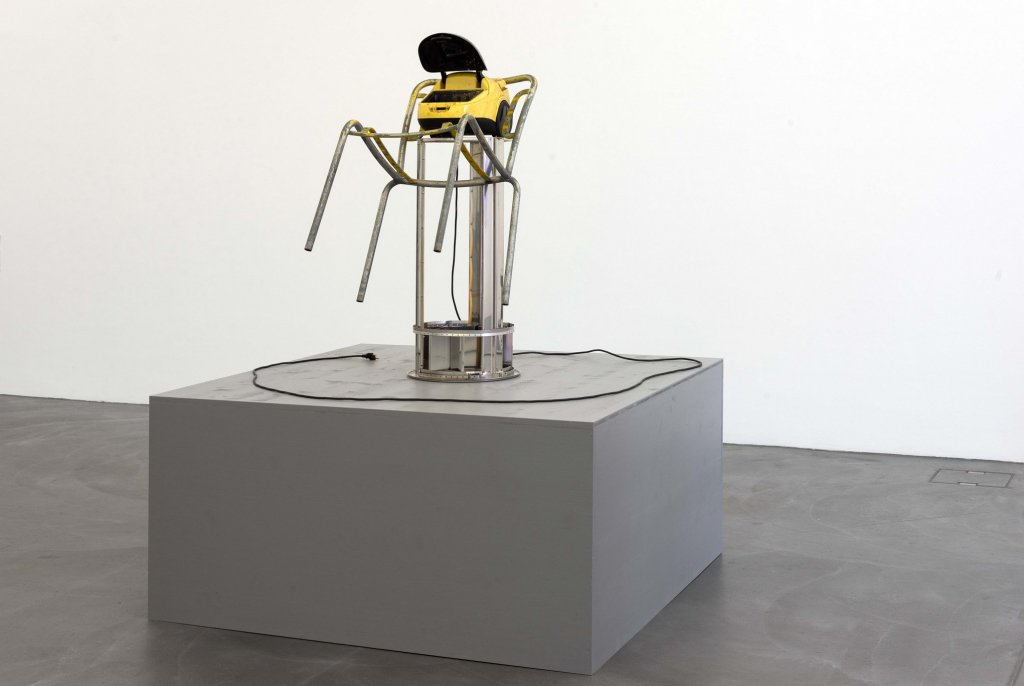
A deserter of the artworld for commitment to social work, Laurie Parsons, (a reverse life-trajectory than Serpas, who turned to art after becoming disenchanted with community organizing and its respectability politics), used to collect things on walks through urban and postindustrial New Jersey areas. Bringing them back to her studio, she would live with them for a while, “interested in the presence they had that I found as powerful as that of a piece of art.” [5] Starting from a similar draw to material, but differing from Shaker furniture-like austerity and silence of Parsons’ pieces (such as A Body of Work 1987), Serpas’ assisted ready-mades often perform a deviant extroversion. In her 2018 exhibition at LUMA Westbau You were created to be so young (self-harm and exercise), together with a number of other sculptural works, the pieces tended to open up in the ways their functionality wouldn’t otherwise allow them—stretching, spilling, balancing on their edges, dismembering, and piling on top of each other. Tilted on the side, hung or shoved—Serpas twists them up and above their limits. Isn’t that the same trash from the street of Zurich, now contorted to present its great trick? In challenging the fixity of value, these objects flaunt their derrière underneath the dress for its, now attentive, audience.
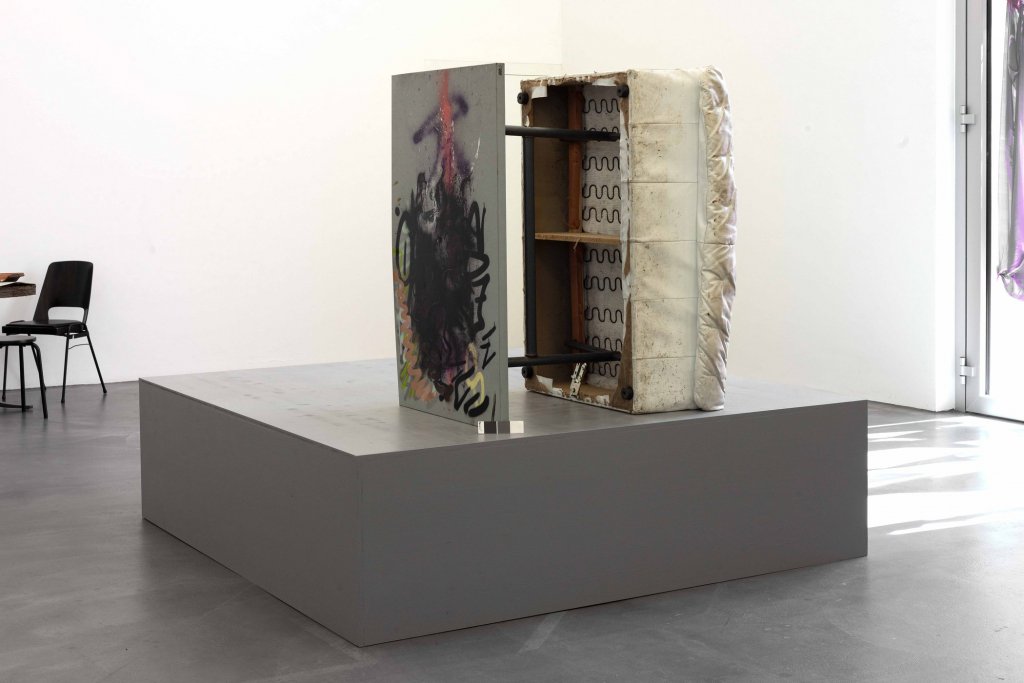
The performativity and disrespect for convention and class is where Serpas’ practice finds a common ground with an artist working more than a hundred years ago, but well ahead of her time. Elsa von Freytag Loringhoven’s treatment of the rejected—from the street, fashion and domesticity—formed into found-object miniature assemblages (Loringhoven’s Limbswish, Earring-Object, Portrait of Marcel Duchamp…), as well as rapacious and performative dressing of the body together with her “confessional” poetry (what nowadays would be called “oversharing”) could be part of the same unruly kinship of Serpas’ hoarded and bound textile scrap pieces and smaller assemblages, as well as her writing practice.
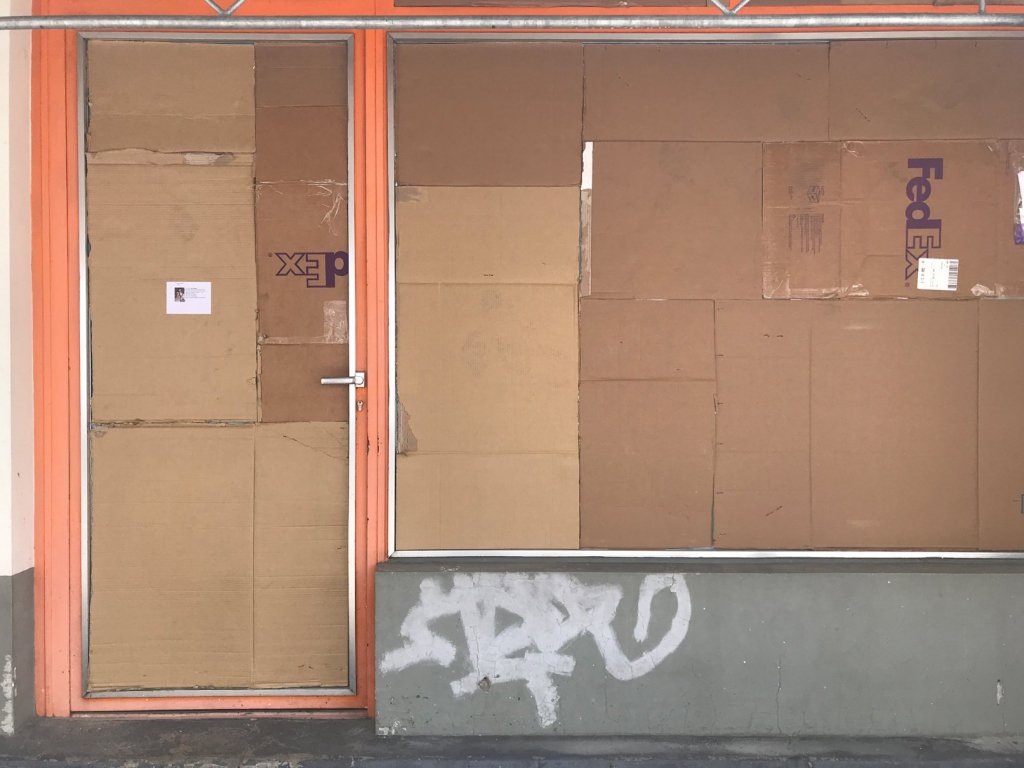
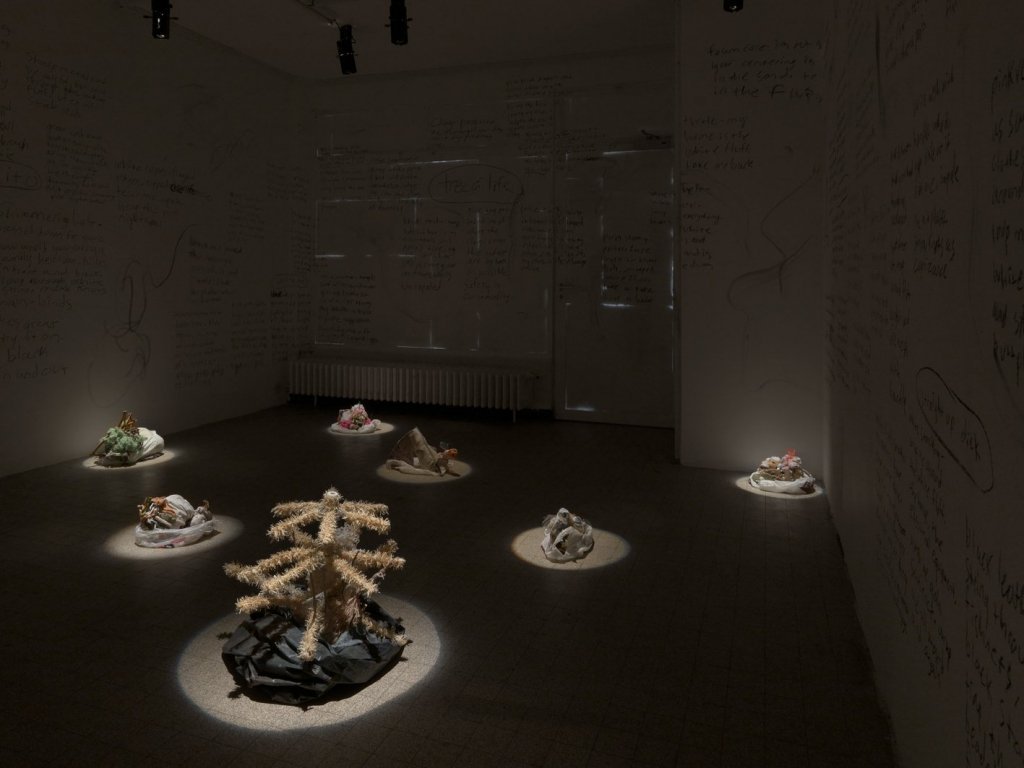
Through the last year an over-used concoction of Octavia Butler’s bag [6] (I’ll re-use it for that reason) as a metaphor for a novel, the fiction-carrier of the ragpickers and quote-and-scatter writers, comes on stage literally and metaphorically in the 2019 show at Geneva’s Truth and Consequences. The poetry handwritten on the darkened walls, and in the space, blinded by the reflectors, small islands of shit strip bare in front of us. Gently held together by the shuffled plastic bags they unveil their discarded flora; in a black trash bag, a yellowed fleece rag enclenches a bottom piece of a beige PVC Christmas tree, in which shoved wooden sticks are adorned with a bulk of plastic price tag fasteners. Next to it, a clumped blanket holding some pale green wool, out of which a mangled XYZ mess of carpenter’s ruler, and a lengthy string of beads of temple arises in the starlight. The show is titled what we need is another body, and the press release spirals through Serpas’ experience of post urban studies at Columbia. She describes it as a blank arts program, surrounded by blanks expecting to read and project into the work. “I tried things as well as other things. I tried the things to make the blank more clear, but in the blank I remained determined to blank myself into oblivion.” she writes. “I bought 4 Loko and worked. I found the blank in me.” The blanks see the work and comment on the violence present. Really, in those small, gross, and absolutely beautiful and cherished bags of shit? Not coincidentally—the violence is not them.
[2] Georges Bataille, “Musee,” in Oeuvres completes, 12 vols. (Paris, 1970-88), 1:329.
[3] Connie Butler, Lunchtime Art Talk,
https://hammer.ucla.edu/programs-events/2021/lunchtime-art-talk-ser-serpas
[4] Hannah Black, Becoming Trash, foreword to Ser Serpas: Carman, published by Koenig Books, London, 2018
[5] Bob Nickas, Whatever Happened To: Laurie Parsons, Artforum,
https://www.artforum.com/print/200304/whatever-happened-to-laurie-parsons-4510,
originally published under title Dematerial Girl, 2003
[6] Ursula K. Le Guin: The Carrier-Bag Theory of Fiction, original 1986, republished by Ignota Books, London, 2020
Tbilisi-based gallery LC Queisser will present new works by Ser Serpas, along with drawings by Elene Chantladze, at CFAlive, CFA’s gallery visiting program in Via Rossini 3, Milano. The exhibition opens on May 4, 2021. Ed.
April 20, 2021
